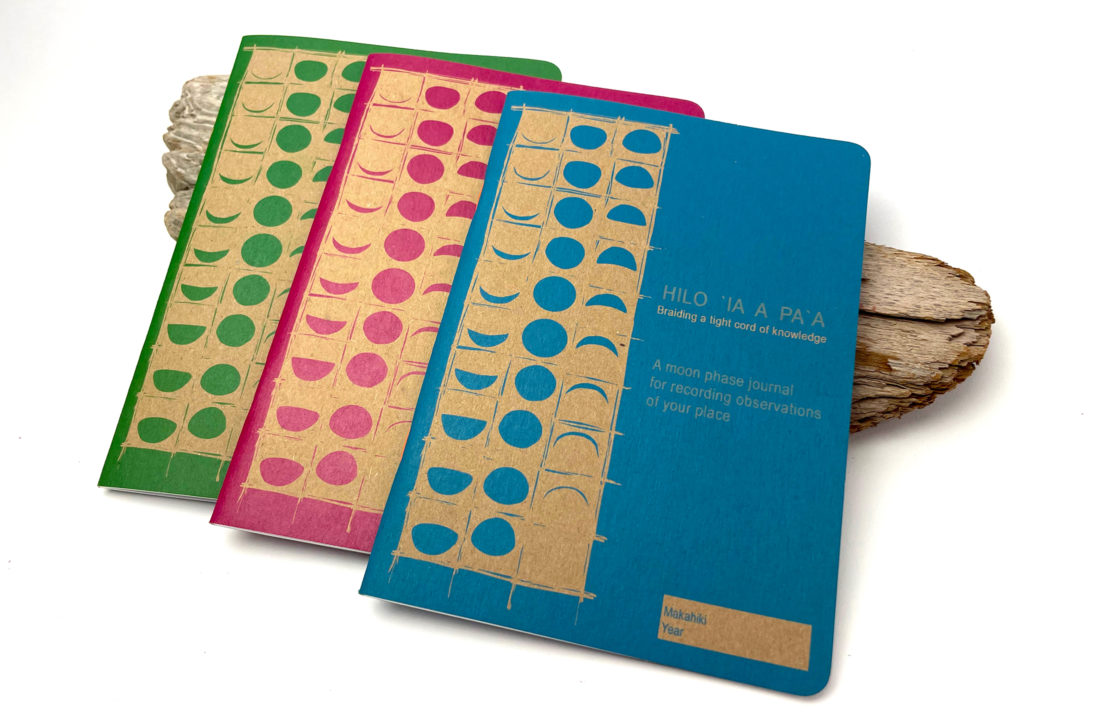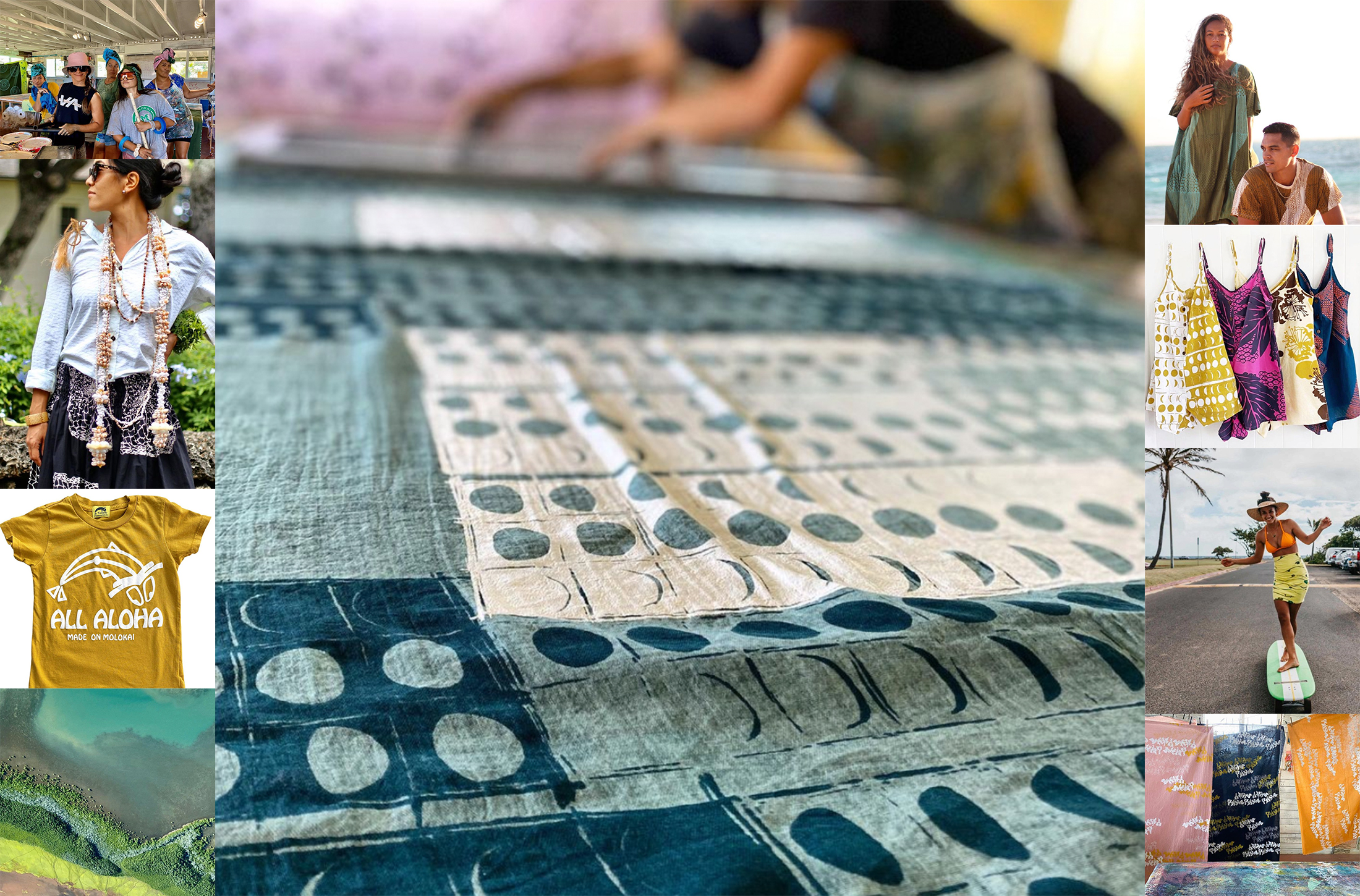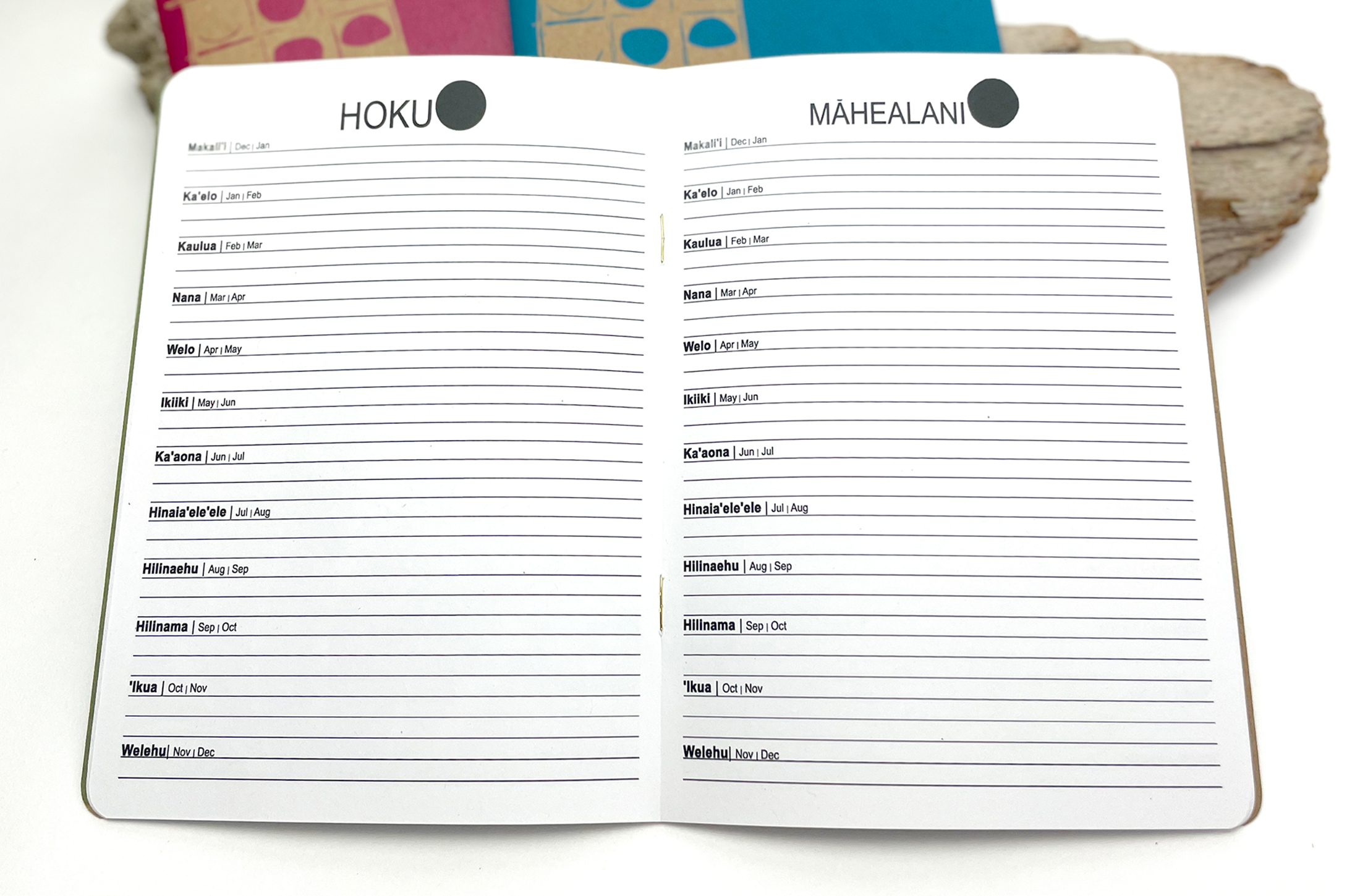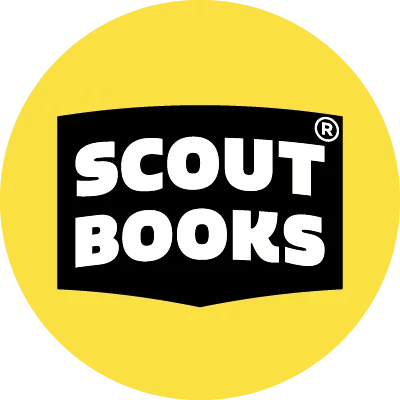
Project Specs
Laura Whipple had the honor of interviewing Hina Kneubuhl of Kealopiko about the inspirations for their creative process, and the Moon Phase Journals that they create with Scout Books.
What prompted you and your partners to found Kealopiko?
The short answer is that we started out wanting to honor our kūpuna (ancestors) by telling their stories in a new and different way, but it’s become so much more than that. As children of the generation who started the Hawaiian renaissance of the 1970s, we were born into a time when Hawaiians were reclaiming so many things from language to knowledge systems to how our history is told and much more. That generation cleared the way for us to reclaim the next layer of who we are, which for us includes clothing as a space to tell stories, revitalize language, and create in alignment with our values as ʻōiwi (people of Hawaiian ancestry). That articulation happens on multiple levels including design process, production ethos, and a commitment to creating small-scale local economies that allow for a more sustainable and ethical circulation of wealth. All of those processes are informed by our personal experiences working on the land and in the ocean in Hawaiʻi, as well as our commitment to deep research into language and history, which always demand fresh and evolving expressions.
What were your first offerings?
We started with limited runs of hand-printed shirts and hand-dyed pareu that we made in a friend’s shop and in our backyards. We sold those off the back of a truck. We showed up at all the festivals and events and cultivated a relationship with our community. All of our designs highlight native Hawaiian plants, animals, language, history and cultural practices and we found that our community had an appetite for those things.
 Images used with permission from Kealopiko
Images used with permission from Kealopiko
What are your biggest inspirations?
The natural Hawaiian world around us which is a living, breathing embodiment of our gods, ancestors, and all life forms to which we are intimately linked through moʻokūʻauhau (genealogy). From that flow the concepts, creations, and accomplishments of our ancestors, which are a collective wellspring of inspiration. Hawaiians also happen to have the largest existing body of historical writings by a native people, so we dive deep into those to inform our thinking and our understanding of design and engagement.
As a maker, watching the video of your team dying fabric, screenprinting, and then sewing your garments was mesmerizing. What a beautiful labor of love. How did your team learn to do all of the different things it takes to create these garments?
We learned our craft by reaching out to key inspirational people in our Hawaiian community and our polynesian cousins in the south seas for guidance and knowledge. Then we tried it out, practiced dying fabric, screen printing, sewing, until we found our method and practices.
We are all professionals in other industries, fashion and design was just a hobby.
We’ve had the honor of working with you since 2013 with making a variety of editions of your Hilo Ia A Paa / Moon Tracking Journals. Can you tell us more about the practice of Moon Tracking? How do you integrate it into your daily rituals? How did you originally come up with the design of the pages?
Moon journaling can be a highly personal process that people employ in all sorts of ways. It’s also something done in classrooms, organizations and in collaboration with others. At its core, it’s a commitment to kilo (observe) something for which you want to increase your knowledge and awareness. That could be the plants, animals, weather, or other natural cycles in your particular area, or even insight into yourself and your own personal rhythms and patterns. Our approach was to have a page for each pō mahina (night or phase of the moon) so that you can compare your observations across malama (months). That’s its intended function. Other journals allow you to track in different ways, but ours specializes in looking at how each phase tracks over the year.

Can you share more about your collaboration with the Moon Phase Project?
We have always been big supporters of their kumuhana (project and broader goals), as they are part of a larger community of people in Hawaiʻi who are actively reclaiming lunar knowledge and seeking a more balanced way of living and working, the way that was developed by our ancestors in reaction to the natural cycles around them that are unique to Hawaiʻi and each locality in our islands. We have contributed posts to @moonphaseproject Instagram page.
When someone is new to the Moon Tracking practice, how do you recommend they begin?
It starts with identifying where you want increased knowledge or insight in your life. Will you watch the tides or waves at your local beach? Will you record what you plant each month and/or how it grows? Will you observe your daily emotions or those of your children? Then it is making time and space to kilo. This means committing to a daily engagement with your chosen element, for as long or short a time as you need, and allowing all of your senses to interact with it, then translating that experience into a few words that you record in the journal.
It is easiest to start on Hilo, the first crescent after the dark moon, but if you know your moon phases well, you can jump in anytime. You also need to choose the correct malama, or Hawaiian month (remember that the new malama will begin on the new moon) and then you are ready to go.
Any exciting projects on the horizon for the Kealopiko team?
We are currently focused on designs based on kapa, the traditional barkcloth that our ancestors made and used for clothing, bedding, ritual, and much more. We are also looking at new opportunities for collaborations with other creatives and community organizations. Looking for inspiration in the aesthetics, practices, and language our ancestors left for us is our general jam, so there’s always something fun in the distance 🙂

